Hip Openers…
- What is a hip opener?
- What is the danger or problem in rotating outward too much?
- What is a counter pose?
- What is happening in most hip openers?
- How do we find balance and counterposes for the hips?
- Hidden places where hips are rotating outward.
- A good test to see if you naturally have a lot of outward rotation.
- Finally… poses that focus on an inner rotation of the hip…
- And how to schedule a private session in person or online.
Disclaimer… I was not a good student in school! Ha! English class was often ditched! Actually, all subjects except Art class were good classes for me to ditch! So please save your judgment on my lack of writing skills! I don’t claim to be a writer! I am just someone who wants to share my knowledge and experience… so read on with an open mind and open heart!
What is a hip opener? I look to Yoga Journal for their definition: “Loosen tight hips, improve your range of motion and circulation, alleviate back pain + more.” Great, got it! But the mistake most people make is that when they hear “hip openers” the focus is on the thought of the hips being open, abducting, rotating outward, away from the center of the body. But you will notice in the definition above it says “improve your range of motion”, so inner rotation is also needed as it is part of the range of motion. This is the part, unfortunately, that gets lost in the practice or teaching of hip openers.
What is the danger or problem in rotating outward too much?
Well, this is where I get to share my story and inspiration for writing this blog post… BUT first and foremost and most obvious, it creates an imbalance and balance is what we seek in yoga no matter your body type, strengths, injuries, and weaknesses.
To my own experience, I am a typical “Lover of opening my hips”! To give this quote definition I will say that this is typically said by someone whose hips open easily, constantly seeks more, looks comfortable in deep hip openers, and are the envy of the room to be able to do this!!! Even when I started yoga I could hardly forward fold, nowhere near touching my toes and no one wanted to look like I did in a forward fold! But if given the chance to open my hips I was the “Rock Star” of the room!!! Baddha konasa and 1/2 pigeon were my places to shine, my happy place to feel accomplished, my place to actually look like I knew what I was doing and I felt at home in a yoga studio! To my dismay though, practicing in this manner got me to a place of being overly rotated outward. Even my good friend and massage therapist, Crystal, pointed out in a massage session that when relaxed my left leg rotates out more than my right. Well about a year or 2 after this, as I continued to “open my hips”, I ended up with a severe injury in my left hip. I literally stood up out of bed one morning in a hurry and bam… the pain was so unbearable in my hip and the left lower back too (over time it migrated/spread to my inner groin area and even muscle spasms all the way down my quads). For months I could barely get out of bed, even when in bed I couldn’t roll over without major pain, going from seated to standing was pure hell and walking was a chore. I didn’t even know what I had done, it isn’t like I had an accident or certain event I could pin this to, it just happened, so it seemed. So through research, visits to my chiropractor, and even further discussions with Crystal I can only blame this on my constant “opening of the hips” and not enough inner rotation, counterbalance, work. So, of course, this why I am sharing my story and this concept with you all because it could happen to any of us. I am better now, but the injury still haunts me. My left hip speaks to me when I have been outwardly rotating too much and constantly reminds me to focus on inner rotation, adductor engagement, and core engagement too. I haven’t focused much on the core here because that could make for a longer post, but engaging my inner core was a must through this healing process too, technically it all wraps around the inner core. It all works together and I hope to blog more on that in the future, keep your eyes posted and be sure to sign up to follow my blog so you can read it.
What is a counter pose? Everything in life is a balance of Yin and Yang. Black/white, night/day, up/down, standing/lying, backbend/forward fold, twist right/twist left, and so on. It is so obvious when it comes to back bending and forward folding what is needed to keep balanced.
What is happening in most hip openers?
Or rather in this reference what people consider as hip openers? I actually think we need to change how we even refer to them… how about calling it “hip rotating” or something like that, I am open to a better name, but hopefully you get my point! Whatever you need to help make you think of the full range of motion, not just outward rotation? When you read articles or hear people talk about hip openers you seldom hear the terms hip openers and closers or hip abducting and adducting! Right? It isn’t as obvious as forwarding fold and backbend. Therefore when we think of loosening up tight hips it can be very heavy on abducting (outward rotation) of the hips even more so this should be referred to as the outward rotation of the thigh/femur bone since the “hip socket” itself is not what is rotating, but actually how the femur bone draws into the hip socket (I could get more anatomy geekish here, but trying to keep this simple). I am talking about poses like and not limited to horse/goddess, butterfly (baddha konasana), 1/2 pigeon, Warrior 2, and figure 4! Even shoelace/cow face (gomakhasana) has an outer rotation of the thigh bone which would focus more on the outer rotation overall, not quite as much as the others, but enough that it may not be considered a true counterpose to all the hip openers.
How do we find balance and counterposes for the hips?
A well-structured yoga practice has a balance of all poses. People say they “Love to do [this] and their body can’t/hates to do [that]!” It is also believed that what we have an aversion to… is what we need, right? Yes! Like Garudasna/Eagle Pose, the least favorite pose amongst the vast majority, but possibly the most needed by everyone (more on this later)! Without straying off the path too much (aversions could be its own subject and blog for another day) let’s stick to a brief description of what a well-structured yoga practice includes… and that is that counterposes are needed to complement the poses you do like to practice or are the opposite and opposing positions in the body that balance us out physically. Sometimes a counterpose could be that we need to engage/strengthen as appose to surrender and for someone who is naturally flexible or hyper-flexible this is usually their focus for counterposes. It doesn’t always have a 1:1 ratio, you can have a focus on digging deeper into a body part, but always, and I mean always have your counterpose(s) included somewhere in your practice. So in the case of hip openers, you could have 2-5 good hip openers targeting the outer rotation of the hips if this is someone’s focus and need, but then remember to have 2-3 counterposes consisting of the inner rotation of the hips to balance out. In my case I have actually backed off on the outer rotation, I still find it, but I try to have more inner rotation as well as engaged/strengthening postures for the adductors then finding the outer rotation these days to keep my body in balance.
Hidden places where hips are rotating outward.
For example, even when we do back bending, the tendency is to let the thigh/femur bones rotate out. Constantly you hear yoga instructors encourage people to draw the inner thighs together in the bridge, wheel, and floor bow to at least hip-width apart (or rather no more than) like you are squeezing an imaginary ball or block? Right? I am sure you have heard this cue at some time. This imaginary squeeze encourages inner rotation. So the cueing is there, you have heard it, you just need to understand its “why” and how important it is and someday train your body to do it on its own, that is called muscle memory.
A good test to see if you naturally have a lot of outward rotation.
Is to stand naturally, now look down at your feet, are they in a V shape on the floor with your toes turned out? Is it hard for you to remember to bring your toes in towards each other or to touching? ( I like to emphasize towards each other as the anatomy of some people’s feet don’t allow the toes to touch, it might be more the balls of the feet coming together). Does it feel unnatural for you to stand with your feet parallel? Are your yoga instructors constantly coming up to you to remind you to adjust your feet? Also, try laying on your back and relax your feet so they open like a book, you might have a friend help you, to see if one leg opens more than the other or do your feet almost lay completely flat on the other edge of your feet when you relax?
Finally… poses that focus on an inner rotation of the hip…
This isn’t everything, but a good place to start, most obvious, and hopefully to give you an idea/intention on how to balance your hips.
- Pinwheel, when both legs are laying to the one side, in the same direction, you have a heal to knee connection, the leg with the knee to the other legs heal is the one with the inner rotation and the heal of that leg is circling back around towards your glutes (doesn’t have to touch your glutes, it is just circling around towards your glutes). You can do this seated (deer pose in Yin yoga) or my favorite – supine (lying belly up).
- Hurdle pose, (not the arm balance) but one leg extended out long in front and the other leg with your heel tucked back around towards your glutes. Sit on a block if this helps. But bringing the heal to the outside of your glutes encourages inner rotation of your thigh. It is like Pinwheel, but one leg instead of both legs bent. You can stay seated upright, you can forward fold or lay back, whichever sounds good or your body allows.
- Hero’s pose/fixed firm (supta virasana), this one can be tough on the knees for some, but even seated on a block(s) and a focus on the inner rotation of the thigh bone it can be done. This would be like doing a double hurdle pose! Basically, you are trying to take both heals towards their coordinating glutes at the same time by trying to bring your sits bones down between your heals (both knees bent of course).
- Eagle/Garudasana with the full wrap of the foot around the calf of the standing leg. NOTE: Without the full wrap it is almost a version of figure 4 which encourages outer rotation if you can’t get the full wrap I do offer a version with a block to help work your way towards a full wrap later in this paragraph, read on. So try your best to work towards a full wrap someday, honestly one reason people can’t get the full wrap is that they are probably naturally too much outer rotated to start with, encouraging inner rotation, even with just TRYING could make this pose a very useful pose to find a great counterbalance in your practice and someday achieve better inner rotation, hence proving just how much inner rotation is needed! But you might ask “If I am nowhere near wrapping, how am I ever going to find it while balancing on one foot?” I suggest doing the pose, eagle, with a block. After you cross the top leg up and over the standing leg, press the ball of your top leg down onto a block, stair-step (in your house) or any object you have on hand. Being able to ground down onto something with the ball of the foot will allow/help you find an inner rotation of the upper leg. I have a secret to point out… even if it is tough to find an inner rotation of the upper leg, the lower leg is finding some inner rotation while holding the squat. So eagle isn’t a full loss if you can’t bind/ground down the upper leg, because your lower leg, is finding some inner rotation to hold you there. Just do it! This also cycles around to when I mentioned above that ‘People say they “Love to do [this] and their body can’t/hates do [that]!” It is also believed that what we have an aversion to is what we need, right?’ Well… honestly, the eagle is the least requested pose in class, people really do have an aversion to this pose… but we need it! Just do it and with trying your best, progression, repetition, and honoring this pose as a true counterpose to all the hip abductors you will find balance and maybe someday the full wrap!
- Fallen Bridge, this is what I call laying on your back, feet flat to the mat like you are setting up for bridge, feet wide apart, and let your knees and inner thighs fall into each other.
- Back bending with a block or ball between your thighs. This is more about strengthening the inner rotation, but also encouraging the inner rotation so you aren’t over-rotating. I covered some of this in the above section on hidden places.
- In all standing, warrior poses and even down dog or forward folds build your intentions and muscle memory towards finding an inner rotation and strengthening of the adductors to resist over outward rotation of the hips. In poses like Warrior 1, this is done by trying to bring the front heel and the back heel towards each other feel the inner thighs engage. In tadasana or forward fold, it is the toes drawing towards each other and sits bones spreading apart.
Love thy neighbor and love thy hips!
I have several offerings to help you explore, let me know how I can help.
peace • love • abundance
– Renee
Photographer Credit – Justine Dunlap-Truly!
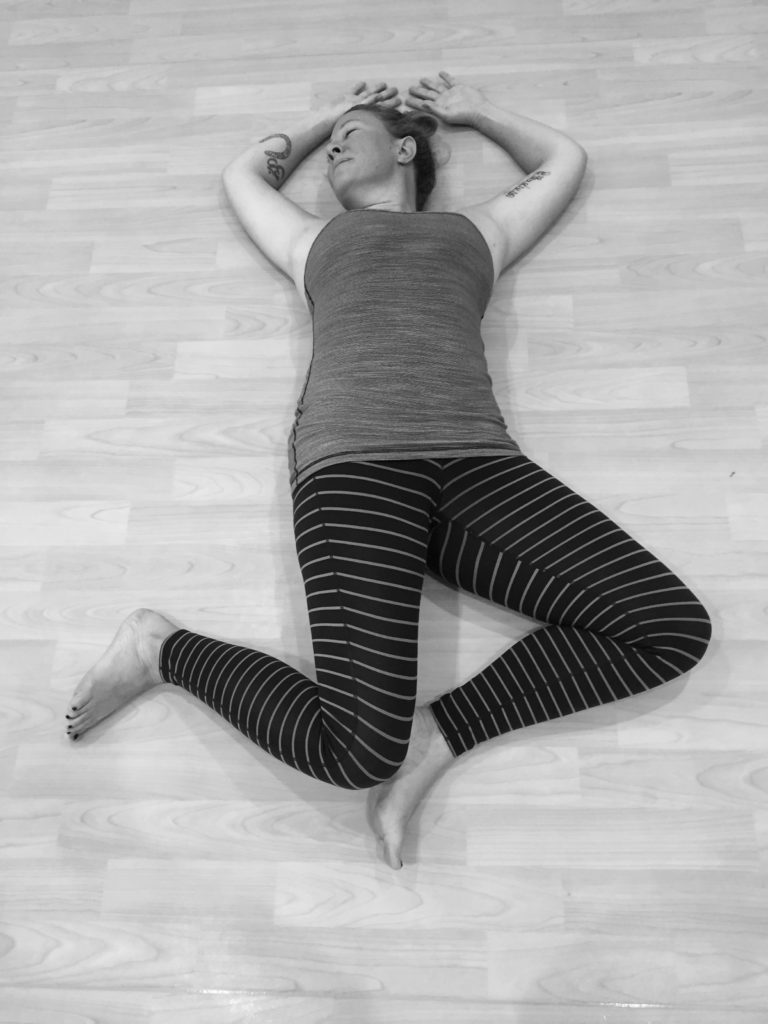
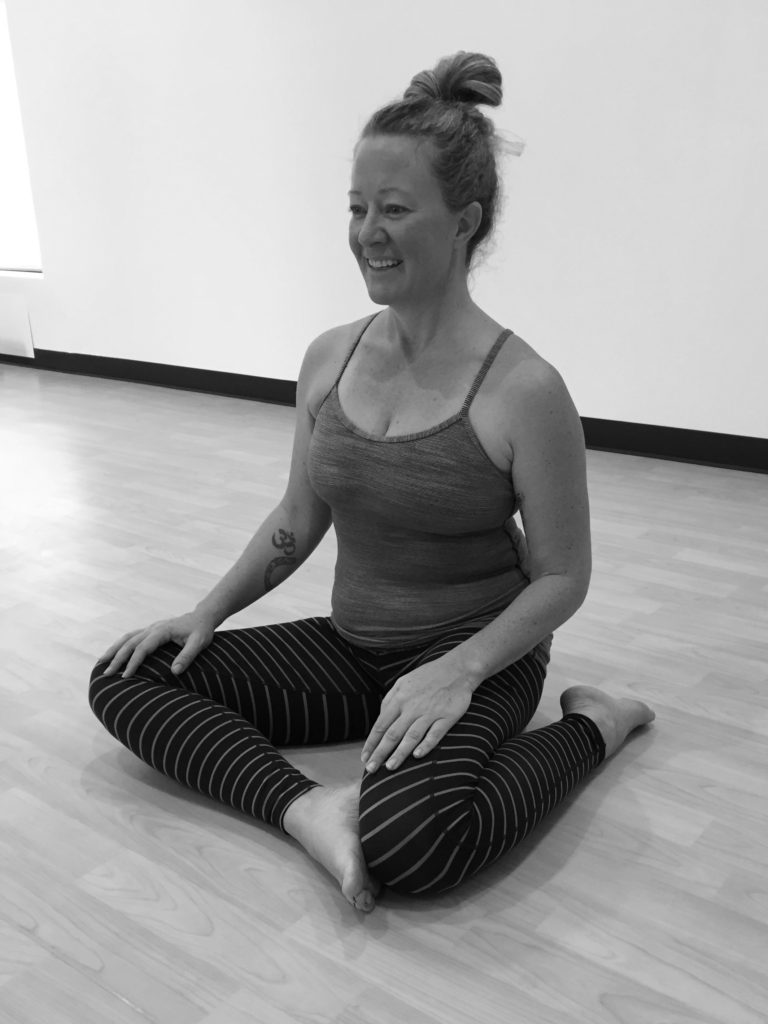
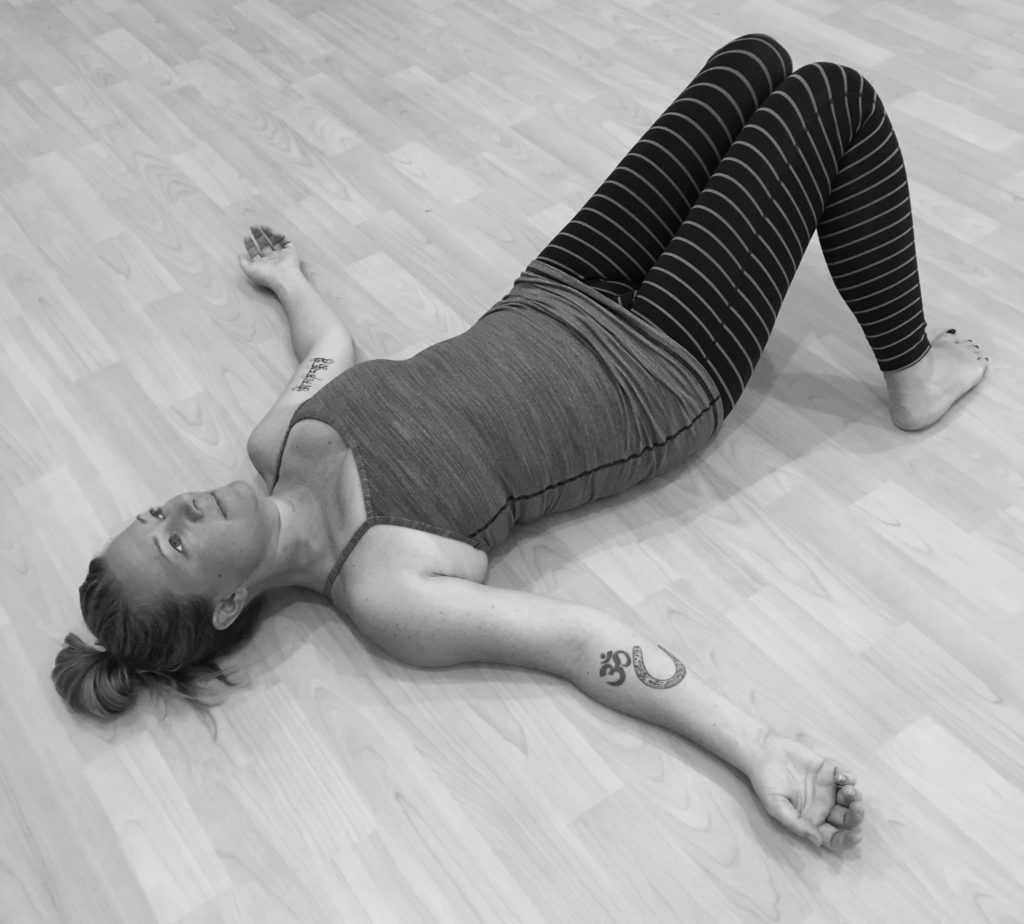
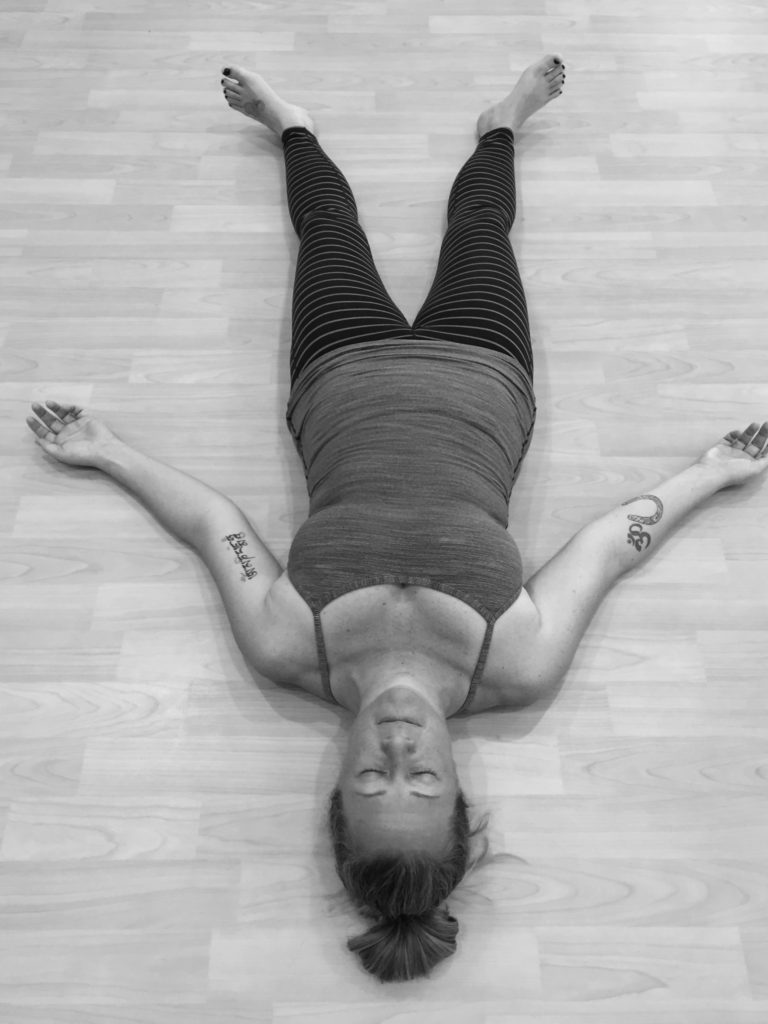
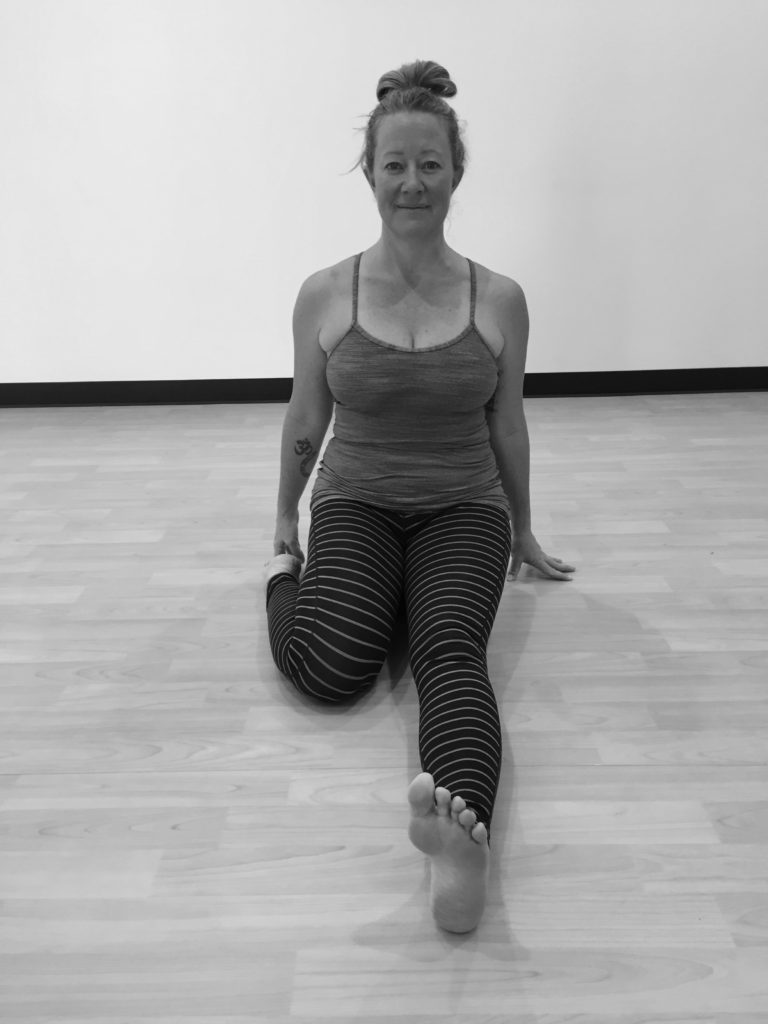
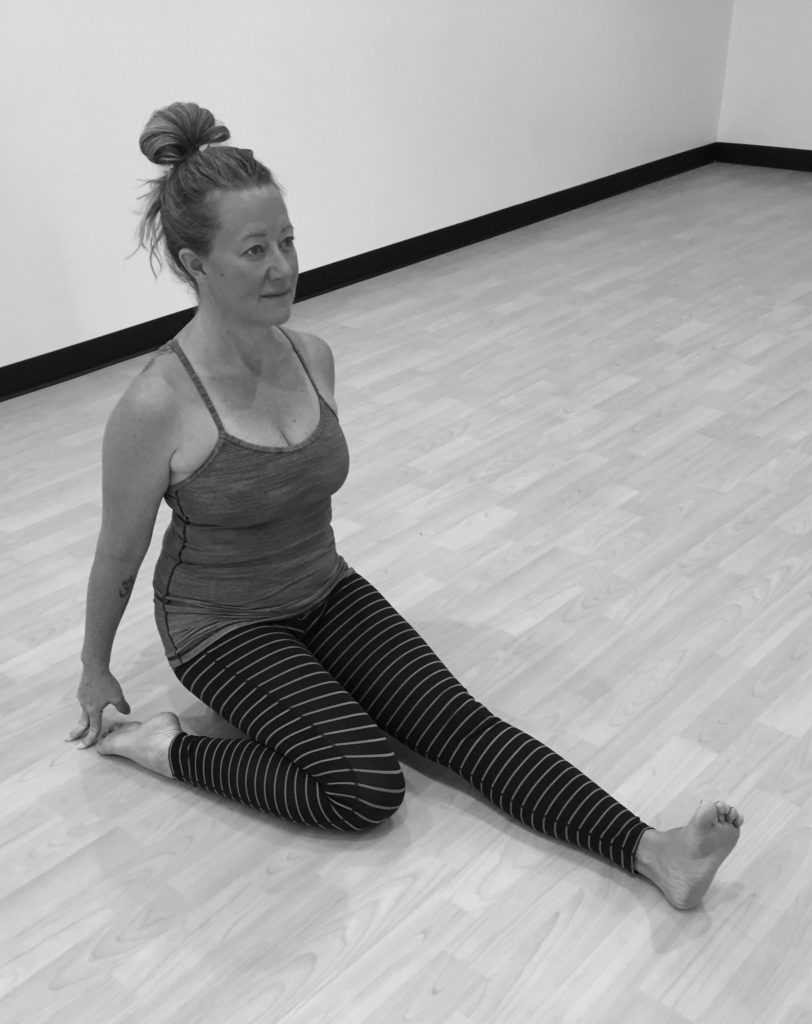
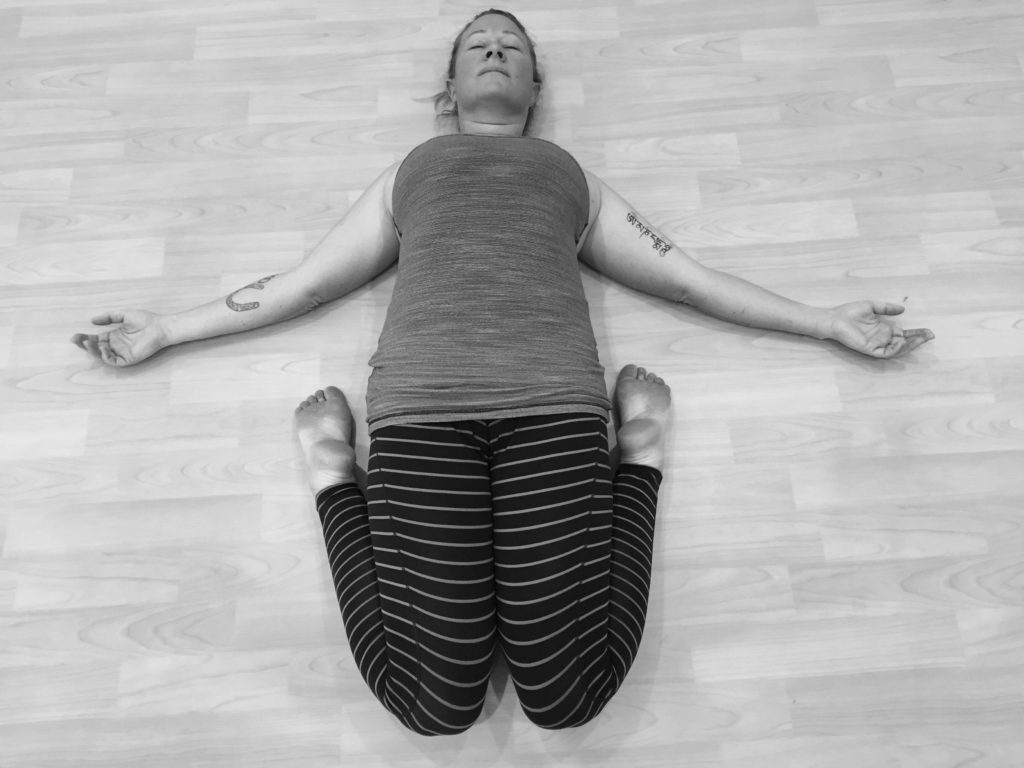
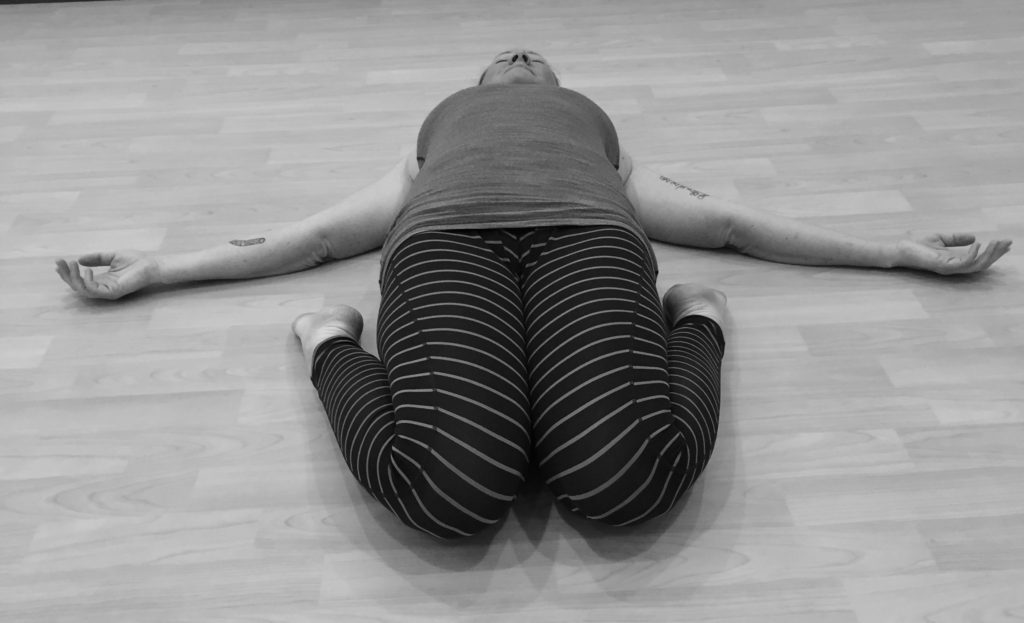
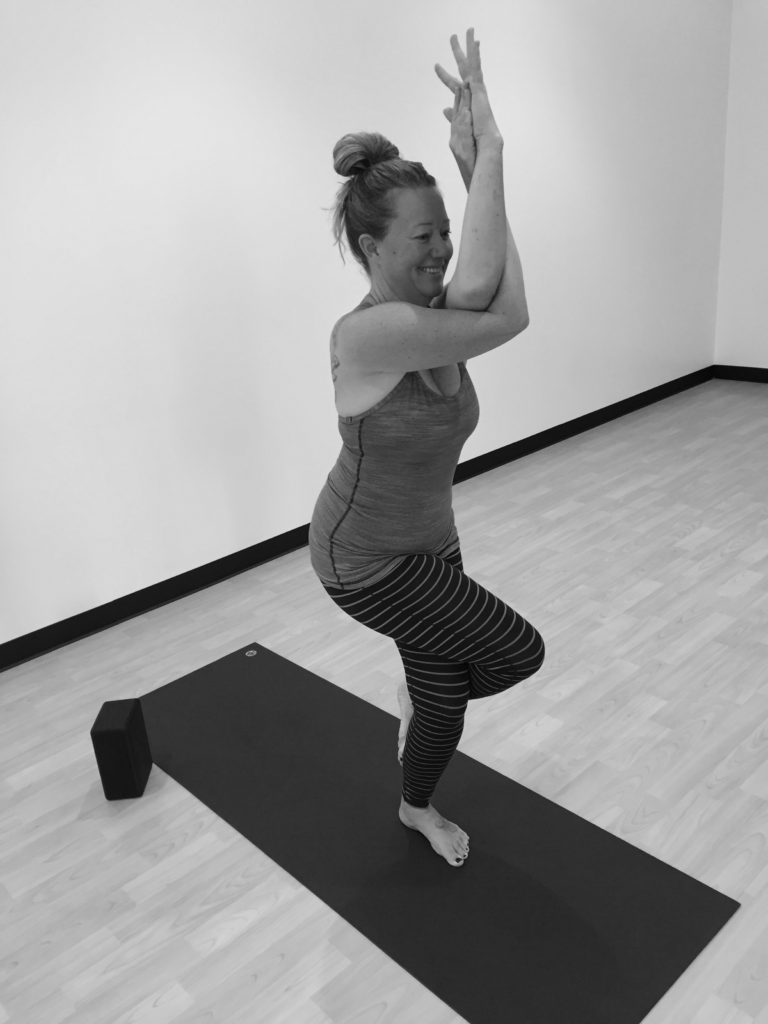
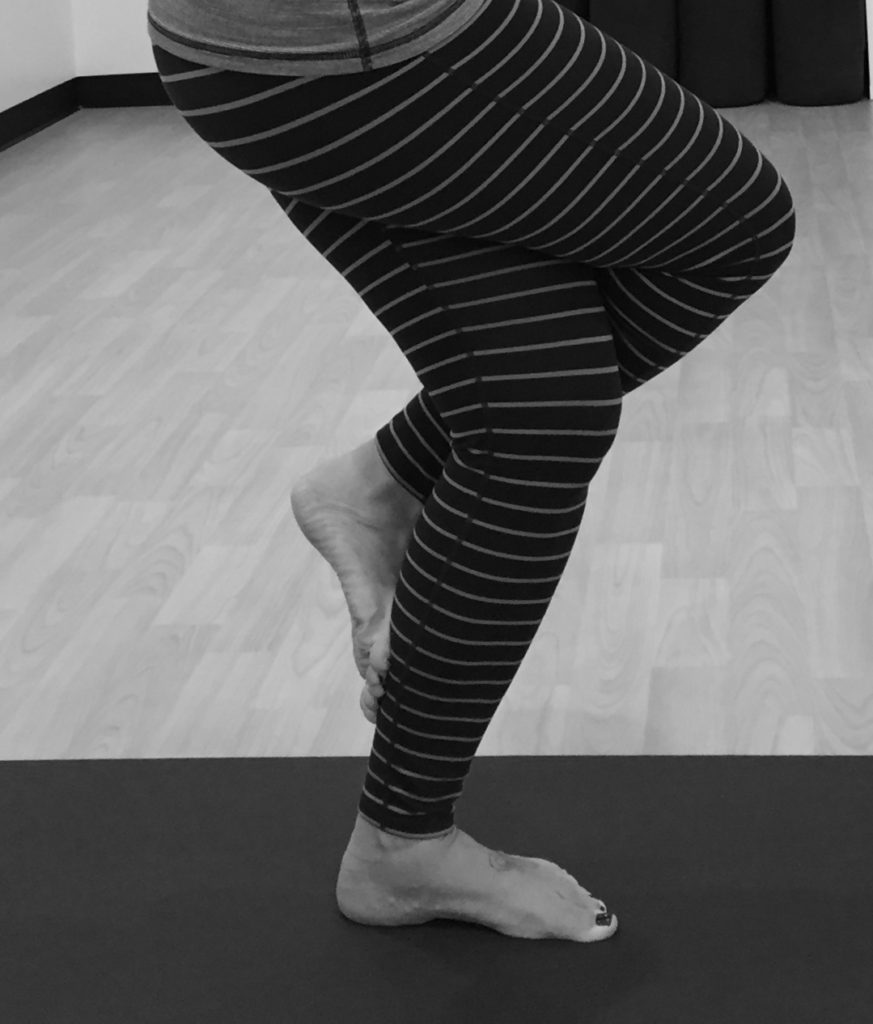
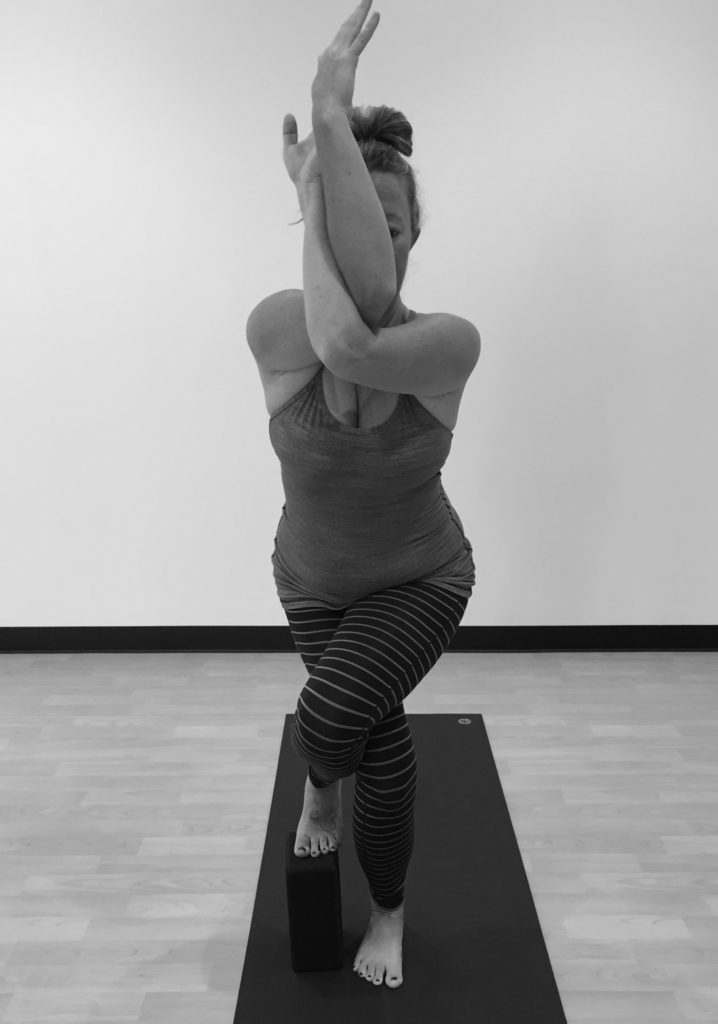
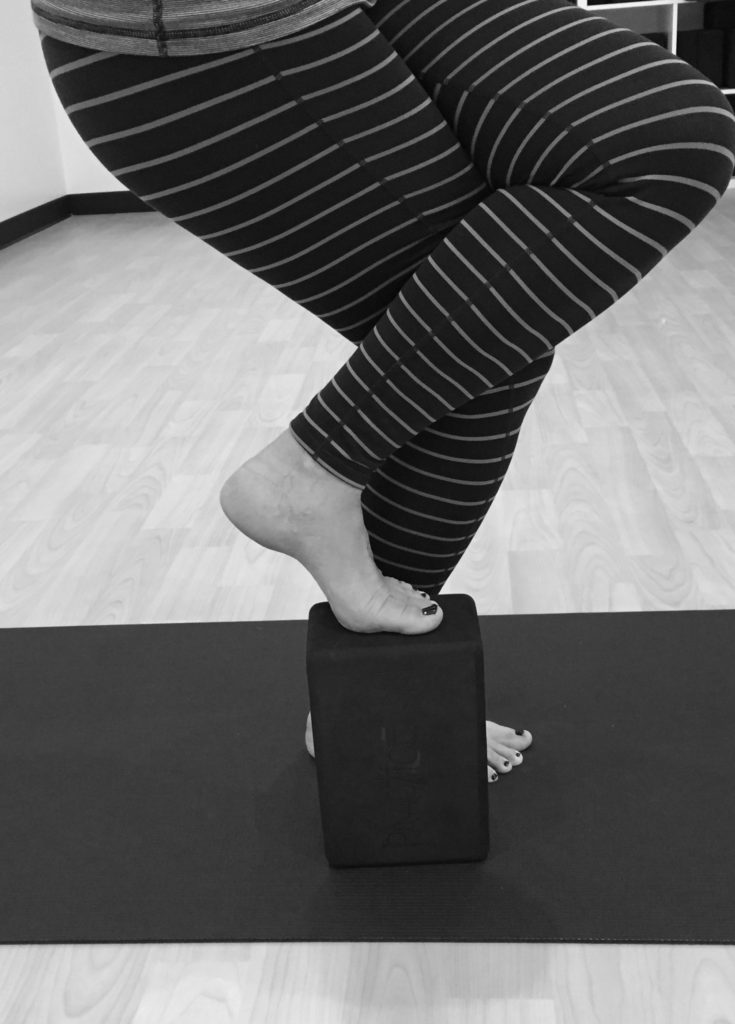
Great post!!! So informative!!
Thanks!